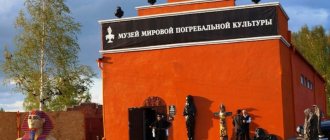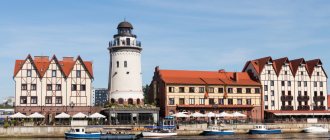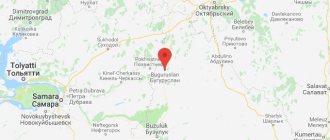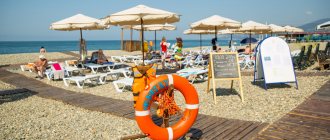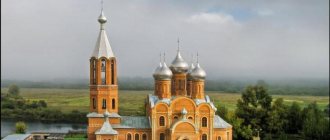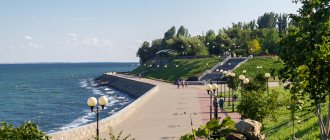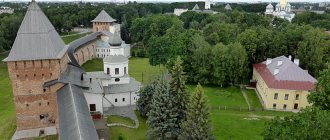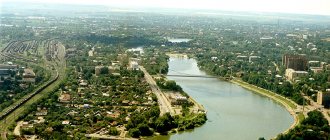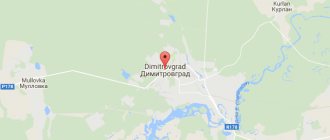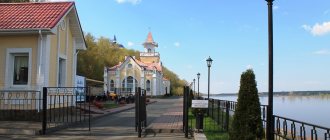| Souvenirs Ural gems Food Alcohol What to bring for men What to bring for women What to bring for a child “Royal” souvenirs Religious souvenirs Where is the best place to buy souvenirs |
Yekaterinburg is one of the largest cities in Russia, the unofficial capital of the Urals. The city with its color and rich history annually attracts tourists from all over the country. Travelers return home not only with impressions and photographs, but also with memorable souvenirs. What to bring from Yekaterinburg?
The list of popular souvenirs and symbolic goods is quite interesting - this includes paraphernalia with the logos of Ural rock bands, and the most delicious mayonnaise in Russia, and Ural gems in different variations, and even porcelain iconostases. Below is a detailed list of gift options with prices, photos and store addresses.
Photo: © Anna Kudryavtseva
Souvenirs
One of the most popular souvenirs from Yekaterinburg is a lizard. If you choose magnets as a gift, then you should pay attention to skillfully made magnets from a piece of malachite, on which sits a golden-colored lizard. Such a souvenir will cost from 250 rubles, but it will definitely stand out on the refrigerator and look incredibly authentic. There are other options for magnets made of stone: jasper, serpentine, obsidian, charoite. Magnets with compositions made of stones and Ural animals look charming: brown bears, moose, wolves.
Travelers bring crafts from local craftsmen from Yekaterinburg and the Sverdlovsk region as souvenirs. Among the goods produced in the region, it is worth bringing as a gift:
- Tavolga ceramics . In the settlements of Nizhnyaya and Verkhnyaya Tavolga, ceramic dishes have been made since the 17th century - since the discovery of large deposits of colored clay. By the end of the 19th century, there were several dozen pottery workshops in Nizhnyaya Tavolga. The dishes are made using a unique technology. It is also distinguished by its appearance - Tavolga ceramics have an emerald glaze and are hand-painted with engobes. The craft was revived - now in the Sverdlovsk region you can buy dishes from the Tavolzhskaya Ceramics workshop. The products are quite affordable - average cost: 200–400 rubles. for one item.
- Sysert porcelain . The production of porcelain at the plant in Sysert is classified as an artistic craft, since 80% of the process is occupied by manual labor. Most of the dishes are painted with an original local pattern, which is called the “Sysert Rose”. A malachite pattern is also found. Motifs from Bazhov's fairy tales are often used in the design of dinner sets - Sysert is the hometown of the Ural writer. The assortment of the Sysert porcelain factory includes tea and coffee sets, souvenirs (figurines, boxes, candlesticks), vases. Religious people can bring a porcelain iconostasis and various church utensils as a gift. Porcelain figurines will cost from 100 rubles. and higher. A pair of tea costs from 200 rubles. Porcelain egg - from 150–200 rubles.
- Nizhny Tagil trays . Artistically decorated iron trays from Nizhny Tagil have been known since the mid-18th century. In those days, trays were made using the forging method, and their edges were decorated with openwork. The surface of the trays was painted not only with ornaments, but also with drawings on historical and mythological themes. Over time, the painting became simpler, and floral arrangements began to predominate on the trays. Such drawings are applied using the swing writing method. Original trays cost from 350–400 rubles. depending on size.
- Birch bark products . There are many birch groves in the Sverdlovsk region. According to ancient beliefs, products made from birch bark protect against the evil eye and misfortunes. Folk craftsmen skillfully make various birch bark products: from traditional bast shoes and baskets to original sugar bowls and bread bins. Souvenir shops also sell women's jewelry woven from birch bark in the ancient Russian style, and children's toys made from birch bark.
Sysert porcelain Photo: © Tatyana Vasilyeva
Sights of Yekaterinburg
Yekaterinburg is rich in various attractions. This is one of the most attractive cities in Russia for tourists.
In the very center of the city is its historical heart - Plotinka, the Historical Square. The city was born from the factory built here. In addition to the pond dam, here you can see an exhibition of large equipment from Ural factories. A pedestrian crossing has been built in the former chest opening of the dam, and a beautiful block of rhodonite has been installed at the dam site.
It is worth taking a walk along the embankment of the city pond and along the Iset River. In summer you can take a boat ride on the pond. Some ancient buildings have been preserved on the shore, among which are the house of the chief head of the Ural mining factories, the forester's house, Sevastyanov's house (one of the main symbols of the city), Tarasov's estate, the former gold-alloying laboratory, etc. On the cape there is a Soviet-era building - the building of the Dynamo sports complex in the constructivist style.
Sevastyanov's House
Near the dam there is a monument to the founders of the city V.N. Tatishchev and V.I. de Gennin. Here they stand together, like friends, although in life they could not stand each other. Nearby is an old water tower. And a little further, opposite the Opera and Ballet Theater on Lenin Avenue, another monument was erected, honored in Soviet times - Y.M. Sverdlov, after whom the city was previously named.
Monument to Yakov Sverdlov
Some architectural monuments of past centuries have been preserved in Yekaterinburg. Among the most striking buildings: Sevastyanov's house, Rastorguev-Kharitonov's estate, Zheleznov's house, Agafurov's house, the first railway station, Borchaninov's mill, Borchaninov's house and others. The oldest building in the city is considered to be the building of the Ural Conservatory, which was previously occupied by the Mining Chancellery (built 1737-39). Old bridges have been preserved on the Iset River: Kamenny to Malysheva and Tsarsky to Dekabristov.
Rastorguev-Kharitonov Estate
Most of the old mansions have been preserved on Chapaev, Rosa Luxemburg, Gorky, Pushkin streets, at the beginning of Lenin Avenue, at the beginning of March 8th. Alas, many beautiful old houses were demolished by officials, and every year there are fewer and fewer trees in the city.
Not only pre-revolutionary buildings are of interest, but also buildings from the Soviet period. Yekaterinburg is called the “reserve” of constructivism. Nowhere else is there such a concentration of buildings built in this style.
The Main Post Office building is an example of constructivism
Among the Soviet buildings, it is necessary to highlight the city administration building, the Main Post Office, the Chekistov Town, the Iset Hotel, some residential buildings, the House of Industry, the circus, the White Tower at Uralmash and others.
View of the circus from the embankment of the Iset River
An obligatory point for tourists coming to the city is the observation deck on the Vysotsky skyscraper. From a height of 188 m you can see the entire city and its surroundings.
View of Yekaterinburg in the evening from the observation deck of the Vysotsky skyscraper
It is also worth walking along the pedestrian street Weiner, decorated with various sculptures. Among the unusual monuments of the city are the monuments to the keyboard and the invisible man.
One of the sculptures on Weiner Street
Most tourists coming from afar, unfortunately, associate Yekaterinburg as the city where the last Tsar was killed. They certainly visit the Church on the Blood, built on the site of the demolished Ipatiev house, and some even go to Ganina Yama (although in fact the bodies of the Romanovs were found in another place - in Piglet Log, where few people visit, but the Russian Orthodox Church never decides admit this, considering that the Romanovs were completely dissolved in acid at the site of Ganina Yama).
Temple on blood
Yekaterinburg has numerous theaters, a philharmonic society, a circus, a zoo, and a water park. There are many museums, among which it is worth noting the Museum of History and Archeology of the Urals, the Museum of Nature, the Radio Museum, the Museum of the History of Yekaterinburg, the Museum of Fine Arts and others. A whole complex of museums has been created in the Literary Quarter.
In the Museum of History and Archeology you can see the Shigir Idol, the oldest wooden sculpture in the world. The Museum of Fine Arts features the largest collection of Kasli art castings, and the main exhibit is the Kasli cast-iron pavilion, created for the World Exhibition in Paris in 1900.
Shigir idol is the oldest wooden sculpture in the world
But the most modern museum in Yekaterinburg is the Boris Yeltsin Museum. The Yeltsin Center itself has become a powerful cultural center - many bright, interesting, educational events are held here.
It is planned to open the Hermitage-Ural Museum in the city soon. And this is no coincidence: during the Great Patriotic War, part of the collections was evacuated to Sverdlovsk.
Yeltsin Center
Until 2021, one of the main symbols of the city was a huge unfinished television tower. It could be turned into a unique attraction, there were many wonderful projects. But Governor Kuyvashev, having bought the tower for 500 million budget rubles and brilliantly held a competition for reconstruction projects, came up with nothing else but to demolish the tower, in which the owner of UMMC Kozitsyn helped him.
View of the Yekaterinburg TV tower from Plotinka
The city's largest events: Ural Music Night, City Day, May Walk, Ural Industrial Biennale of Contemporary Art. Every year the city hosts the Stenography festival, during which artists transform space with the help of graffiti.
Of the natural attractions within the city, the most interesting are the Shartash stone tents, Lake Shartash, and the Baran Peninsula on the Verkh-Isetsky Pond. In the vicinity: the archaeological monument Kamenny Island, the rocks of Devil's Settlement, Petrogrom, Seven Brothers, Lake Tavatuy, the birthplace of gold, the city of Berezovsky and other places.
When visiting the Ural capital, you can stay overnight in one of the hotels in Yekaterinburg.
In a special section on the website of the Uraloved project, descriptions of the most interesting sights of Yekaterinburg are posted.
Pavel Raspopov
Literature Wikipedia Rundqvist N.A., Zadorina O.V. Sverdlovsk region. From A to Z: Illustrated encyclopedia of local history. - Ekaterinburg, 2009. Sverdlovsk region. Guidebook "Burdock". – Ekaterinburg: Publishing House Fest Hand, 2021.
Ural gems
The famous semi-precious stones from the depths of the Ural Mountains are the first thing that is brought from Yekaterinburg. The first stone-cutting factory in Yekaterinburg opened in 1726. Masters of jewelry and stone cutting were trained under the patronage of the Imperial Academy of Arts. Even then, local craftsmen made jewelry and interior items for the royal court. Over several centuries of stone mining, more than 200 types of minerals have been discovered in the Ural Mountains. Among them are both rare stones and very common ones. First of all, tourists bring from Yekaterinburg as a gift:
- Malachite . The stone is associated with Yekaterinburg and Bazhov’s fairy tales. Not only boxes are made from it, but also jewelry, decorative figurines, writing instruments, and watches. Among the most original options are flash cards made of malachite. But when purchasing a gift made of green stone, it is worth keeping in mind that the Ural deposits were exhausted several decades ago. All modern souvenirs are made from African malachite.
- Jasper . Variegated stone with many shades and transitions (there can be more than 300 of them in one stone!) is valued as an unusual ornamental material. The stone can be found in other mountains around the world, but the Ural and Altai jasper is recognized as the most beautiful. The brightness of Ural jasper is given by inclusions of other minerals. In the mountains it occurs in the form of strips up to several meters long. Just like malachite, various decorative items, jewelry and luxury office supplies are made from jasper.
- Coil . The European name for the stone is serpentine. The name appeared because of the unusual color of the stone: from yellowish-muted to dark green interspersed with other shades - the appearance of the stone really resembles snake skin. Beads, brooches, cigarette cases, decorative figurines and other souvenirs are made from coils.
- Listvenite . The stone was once called Nevyansk marble for its external resemblance to a noble rock. The modern name is associated with Mount Listvyana, where the main reserves of stone in Russia are located. Listvenite is not a mineral, but a rock: it consists of several types of minerals. The source of green color is fuchsite, mica gives shine, and quartz gives hardness. Stone is used to make interior decorations, including quite massive ones. In souvenir shops you can buy women's jewelry with listvenite and small decorative items.
How much do products made from Ural gems cost? A small malachite box will cost 2–3 thousand rubles. A medium-sized box (from 10 cm in length) will cost 5 thousand or more. Small coil products - from 250–500 rubles.
Story
The first Russian settlement on the territory of modern Yekaterinburg is considered to be the village of Shartash, founded by Old Believers in 1672 on the shore of the lake of the same name. In 1704, on the Uktus River (now called Patrushikha), the state-owned Uktus Plant was founded - one of the first metallurgical plants in the Urals.
By order of Peter I, V.N. arrived in the Urals in 1720 as the head of state-owned mining factories. Tatishchev. He came to the conclusion that it was necessary to create an industrial and commercial center in the Urals. He chose a place for him on the Iset River, but after that Tatishchev was recalled from the Urals due to denunciations.
William de Gennin arrived in the Urals. At the site chosen by Tatishchev, Gennin built the Yekaterinburg plant, which was launched on November 18, 1723. This date is considered the birthday of Yekaterinburg. The city got its name in honor of the wife of Peter I, the future Empress Catherine I. Gennin wrote:
“... a new fortress, which was built in the Ugric province near the Iset River, and in it factories with various factories and manufactories, was named after Yekaterinburg, for the memory of eternal generations and for the eternal glory of Her Majesty, the most merciful Empress.”
Since times were turbulent, the city was located inside a wooden fortress. In 1735, the Mint was created in Yekaterinburg, which worked intermittently until 1876.
Monument to the founders of the city - V.N. Tatishchev and V. de Gennin
At that time, the Ekaterinburg plant was the largest in the Urals. But since it stood on a very small river, there was often not enough water to operate the enterprise. To avoid plant shutdowns, another dam was built upstream of the Iset, and next to it the Verkh-Isetsky plant. Later, in the vicinity of Yekaterinburg, the Elizavetinsky and Nizhne-Isetsky factories were built, the territory of which eventually became part of the city.
Since the late 1750s, production output at the Yekaterinburg plant gradually decreased. Copper smelting production ceased in 1769, and the plant was closed in 1808.
In 1765 (according to other sources, in 1751) the Yekaterinburg lapidary factory was founded, which later became famous. Its heyday occurred in the mid-19th century. The city was one of the world centers for the artistic processing of colored stone. Products made here from Ural stone were used to decorate imperial palaces; now they can be seen in the Hermitage in St. Petersburg and in other large museums.
Yekaterinburg city. Photo by V.L. Metenkova
Yekaterinburg developed as an administrative center of the mining industry of the Urals and Siberia. In 1781, Yekaterinburg received the status of a district city of the Perm province, and in 1807 - the status of a “mountain city” equal to a provincial one. Here was the residence of the Chief Director of the mining factories of the Ural ridge. In 1863 the city became a civil department.
Trade developed rapidly, there were many merchants. In the 1820s, Yekaterinburg and its environs were gripped by a gold rush. Many merchants made a fortune from this. As a reminder of those times, some luxurious merchant mansions have been preserved in the city.
The Great Siberian Highway, which passed through Yekaterinburg in the 1760s, also contributed to the development. In 1878, the first Ural mining railway in the region was built, and later others. The city grew and developed quickly. In 1887, a large Siberian-Ural scientific and industrial exhibition took place here, which at that time was a big event.
Old railway station
By the beginning of the 20th century, Yekaterinburg became one of the largest district centers in Russia. The Ural Chemical Laboratory, the Siberian Trade Bank, branches of almost all major banks in the country worked here, and 49 factories and factories operated. By 1917, about 100 thousand people lived in Yekaterinburg. Despite the active development of the city, it did not have a developed infrastructure; water supply appeared in it only in Soviet times.
Archiereiskaya Street
During the Civil War, on July 17, 1918, the last Russian Emperor Nicholas II and his family were shot in the basement of Ipatiev’s house in Yekaterinburg.
Since 1918, Yekaterinburg became the center of the Yekaterinburg province. With the arrival of the whites it was abolished and then restored again. In 1923, Yekaterinburg became the capital of the huge Ural region, which included the territories of modern Kurgan, Chelyabinsk, Tyumen, Sverdlovsk regions and the Perm region. On October 14, 1924, the city was renamed Sverdlovsk - in honor of the revolutionary Ya.M. Sverdlova (1885–1919). On January 17, 1934, the Sverdlovsk region was separated from the Ural region.
During the first five-year plans, Sverdlovsk turned into a powerful industrial center. In the 1930s, Uralelectromash and others were built. In addition to industry, science and education developed. In 1932, the Ural Branch of the Academy of Sciences opened. During the Great Patriotic War, more than 50 large enterprises were evacuated to the city, on the basis of which new factories were created or old factories were expanded.
During Soviet times, the appearance of Sverdlovsk changed dramatically. It was rebuilt by talented architects in new architectural styles.
On September 4, 1991, the city returned its historical name, but the Sverdlovsk region retains its former name to this day.
The building of the mountain pharmacy (now the museum of stone-cutting art)
Among the tragic events in the history of the city, it is worth noting the anthrax epidemic that broke out due to the military in the spring of 1979, as well as the powerful explosion at the Sverdlovsk-Sortirovochny station on October 4, 1988.
At different times, many famous people lived in the city: writers D.N. Mamin-Sibiryak, P.P. Bazhov, V.P. Krapivin, inventor of radio A.S. Popov, military leader G.K. Zhukov, Secretary General L.I. Brezhnev, the first president of Russia B.N. Yeltsin and others.
Water tower
Food
Yekaterinburg is not famous for any special gastronomy. Iconic products like gingerbread from Tula or marzipan from Kaliningrad are not associated with the city. But here, too, there are specialties that are worth bringing back from your trip for yourself and your loved ones. What food should you bring from Yekaterinburg?
First of all, these are gift sets of sweets. The most popular sets: “Ural Tales”, “Vivat, Russia”, “Catherine I”, “Peter I”, “Ekaterinburg”. Boxes of chocolates are beautifully decorated to resemble boxes made of malachite and jasper. The candies of another series are also aesthetically designed - “Give the city to your loved ones”: “Grace”, “Temple”, “Heart of Yekaterinburg”. They are packed in tin boxes with information about the city's attractions. Another edible gift for tea is Bazhov's Tales gingerbread.
The Sverdlovsky cake has a nostalgic taste. He has been loved by Russians since Soviet times. The cupcake produced in the city of Rezh is closest in taste to the Soviet original.
Travelers who have visited the capital of the Urals often answer the question “What should I bring from Yekaterinburg?” They answer: “Mayonnaise.” Mayonnaise from the Yekaterinburg Fat Plant is considered one of the city's brands. Yekaterinburg even got into the Guinness Book of Records as the city with the highest level of mayonnaise consumption. The famous white sauce “Provencal EZhK 67%” has been produced at the fat plant since the 70s of the last century. The recipe has not changed since then. Mayonnaise is spicier than others, but only due to natural ingredients - mustard and vinegar. But original mayonnaise is in demand only in its native region. For export to other regions of Russia and the CIS countries, a “softer” version is produced under the “Housewife’s Dream” brand. Mayonnaise “Provencal EZhK 67%” is sold in plastic containers and glass jars - quite convenient for transportation.
Photo: © Anna Kudryavtseva
Also from Yekaterinburg they bring jam from local farmers (it’s worth trying jam from fir cones), local or Bashkir honey, and various pickles. In local shops you can find an unusual delicacy - pine nuts in pine syrup. This is one of the most unusual edible options that you can bring from Yekaterinburg as a gift.
As for drinks, travelers recommend bringing tea from Yekaterinburg. Ivan tea or fireweed is considered iconic. It grows in most of Russia, but it is fireweed tea from the Urals that is recognized as the most environmentally friendly and healthy. It is recommended to drink fireweed tea in the morning - the tonic effect is no worse than coffee, but at the same time, the drink does not contain caffeine, which is harmful to the body. Small packages weighing 100-150 grams can be found in local supermarkets, gift sets - in souvenir shops. Cost per pack - from 100 rubles.
Features of Yekaterinburg today
The area of Yekaterinburg is 490 square meters. km. The population is about 1.5 million people. In terms of population, it is the fourth city in Russia (after Moscow, St. Petersburg and Novosibirsk).
Yekaterinburg is located in the Middle Urals, on the eastern slope of the Ural Mountains. The conventional border between Europe and Asia runs nearby. The Ural Mountains in this place are very low, they look like hills. This favored the construction of roads from Central Russia to Siberia in this place. The city has an advantageous geographical location. There are railways and major roads here, and the Koltsovo international airport operates.
Ekaterinburg railway station
An advantageous location contributes to economic development. Ekaterinburg is one of the largest transport and logistics hubs. There are many shopping and office centers here, the city is growing upward, and skyscrapers are appearing. Yekaterinburg is the most compact city with a million population in Russia.
City pond
The main river of the city is the shallow Iset. On Iset, within the city limits, there are ponds: Verkh-Isetsky, Gorodskoy, Nizhne-Isetsky. All tributaries of the Iset within the city limits (except for Patrushikha) were hidden underground during Soviet times. Among them are Melkovka, Osinovka, Olkhovka, Malakhovka, Akulinka, Monastyrka, Cheremshanka. On the outskirts of the city there are lakes: Shartash, Maly Shartash, Shuvakish.
On the shore of Lake Shartash
Yekaterinburg is the only city in the Urals that has a metro. Its construction began back in 1980, and the first three stations opened in 1991. This is the last subway opened in the USSR. For a long time, the Yekaterinburg metro was considered the shortest in the world. Now there are 9 stations in the city, the length of the line is almost 13 km.
Memorial sign in honor of the start of metro construction
Yekaterinburg has a fairly active civil society. This was proven by the events of 2021, when the townspeople, despite the decision of the Russian Orthodox Church, officials and oligarchs, were able to defend the park near the drama theater from being built by another church. And before that, Yekaterinburg residents defended the Stone Flower fountain and the city pond, where they wanted to build the same church.
The budget of Yekaterinburg for 2021 is 49 billion rubles.
Mansions on Gorky Street
Alcohol
Since Soviet times, Yekaterinburg has been famous for its Isetskoye beer. The foamy drink will appeal to nostalgic friends and acquaintances. You can also bring Tagilskoe beer - there are more than 15 varieties in the assortment.
Berry and herbal liqueurs are most often brought as a gift from Yekaterinburg among alcoholic drinks. The most popular of the Ural balsams and strong alcohol are:
- "Ural foothills" . Balsam “Ural Foothills” is made from 25 types of herbs and berries from environmentally friendly natural places of the Western Urals. The exact recipe is unknown. The composition contains: thyme, birch buds, cranberry juice, sea buckthorn, honey, rowan.
- "Old Ural" . Vodka based on alcoholized apples or alcoholized apple juice. The drink is strong and quite specific.
- "Ural mountain ash" . The tincture is quite sweet, suitable as a gift for both men and women. The taste is sweet and sour, light astringency. The aroma of rowan is clearly felt. The tincture is therapeutic - it normalizes the functioning of the liver and kidneys.
Balsams are produced at the Perm wine and vodka factory, but they are considered a general Ural specialty. You can buy balms and tinctures in gift boxes in souvenir shops. Drinks in standard original packaging are sold in the alcohol departments of supermarkets. “Ekaterinburg” and “Demidov” are considered the original Ekaterinburg vodkas.
Photo: © Anna Kudryavtseva
Day three. Museum
There are many museums in Yekaterinburg, you can always choose what suits your interests. You can visit some museums while exploring the city’s attractions, or you can dedicate a separate museum day to this.
Museum of History and Archeology of the Urals
If you are interested in the history of the Urals from ancient times and want to see the ancient Shigirsky Dol, which is twice as old as the Egyptian pyramids, go to the Museum of History and Archeology of the Urals . The museum building itself is also interesting - an architectural monument in the constructivist style. Its magnificent staircase is worth seeing!
Spiral staircase of the Museum of History and Archeology of the Urals Photo: © Anna Kudryavtseva
Art Museum
If you love art, be sure to visit the Museum of Fine Arts , its permanent exhibition has a lot of interesting things. The history of the museum begins in the last quarter of the 19th century, and in subsequent years the collection was replenished with transfers of works from the State Tretyakov Gallery, the State Hermitage, the State Museum of Fine Arts. Pushkin, receipts from the State Museum Fund, from private collectors and artists.
There are works of Western European art of the 14th–19th centuries, Russian art of the 18th–early 20th centuries, stone-cutting and jewelry art of the Urals, artistic cast iron, icons, sculptures, furniture, and interior items. Many have heard about the pearl of the Kasli casting collection - the cast iron pavilion, which received the highest award at the 1900 World Art and Industrial Exhibition in Paris. It is registered in the international UNESCO catalog as a rarity - the only architectural structure in the world made of cast iron that is in a museum collection.
Reviews from tourists about visiting the Museum of Fine Arts
Kasli cast iron pavilion Photo: © Anna Kudryavtseva
Misha Brusilovsky Museum
A world-famous artist, Misha Brusilovsky, lived and worked in Yekaterinburg for more than 60 years. His works can be seen in museums and private collections not only in Russia, but also in many cities around the world.
Juan Fernandez Soleros Casaravilla, the chief curator of the Prado Museum in Madrid, spoke about the artist’s work in the following way: “The painting of Mikhail Brusilovsky from Russia seems to me to be one of the most striking phenomena in Russia of the 20th century, by no means deprived of genius in this area of the human spirit over the past century. Continuing the great tradition of figurative art of Russia by I. Repin, M. Vrubel, Brusilovsky showed his homeland and the world an unprecedented cascade of transformations of form and color, which boldly puts him on a par with such phenomena of our time as P. Picasso, X. Miro, A. Matisse."
You can see the works of a world-class artist at the Misha Brusilovsky Museum .
Misha Brusilovsky Museum Photo: © Anna Kudryavtseva
There are many interesting museums in Yekaterinburg. For example, the Radio Museum , which is located in the house where the inventor A. S. Popov lived in his youth, or the Sound Recording Museum , which provides a unique opportunity not only to see, but also to hear how sound was recorded and reproduced in the 19th and 20th centuries. Someone will be interested in the museum of Soviet life “Made in the USSR” . Some may be interested in the Anti-Museum of Computers and Games , where you can see dozens of modern and retro computers, most of which are in working condition. Here you can also play on consoles of different generations.
There are many departmental museums in Yekaterinburg. For example, the Museum of Cosmonautics and Rocket and Space Technology - Museum of NPO Automation named after. Academician N.A. Semikhatkin, one of the leading enterprises in the country's space industry. Its exposition includes hundreds of exhibits, and the interactive launch of a space rocket in 3D format will not leave children and adults indifferent.
In the “Museum of the History of Uralmashplant” you can not only get acquainted with the history of the legendary plant, about which they often said “for the first time in the country”, “for the first time in the world”, but also see a model of a walking excavator in action. You just need to sign up for a tour in advance.
More information in the material: Museums of Ekaterinburg
“Museum of the History of Uralmashplant” Photo: © Anna Kudryavtseva
What to bring from Yekaterinburg for men
Men can receive stationery, office supplies, and accessories decorated with Ural gems as a gift from Yekaterinburg. These can be cigarette cases and lighters, flash cards and pens, stands and table lamps. So, a lighter made of coil will cost from 500 rubles, from malachite - from 1500 rubles. A coil handle will cost from 700 rubles, a small table clock made of stone will cost from 1000 rubles. A set of several tabletop items made of stone - from 2500–3000 rubles. depending on size and configuration.
As a symbolic gift, you can bring an obsidian keychain (from 250 rubles) or a small figurine for holding papers (from 150–250 rubles).
Fans of Russian rock can bring T-shirts with the logos of the groups “Agatha Christie” and “Chaif” - both musical groups come from Yekaterinburg. Football fans are given as a gift paraphernalia with the symbols of the Ural club.
Photo: © Tatyana Vasilyeva
What to bring from Yekaterinburg for women
Most often, women from Yekaterinburg receive jewelry with Ural gems and precious stones as a gift. In addition to jewelry, you can purchase accessories made from stones: business card holders, pocket mirrors, combs, diaries with a “stone” cover. So, a business card holder made of malachite will cost from 1,800 rubles. Smaller accessories - from 800–1000 rubles.
A significant gift from the Urals will be a malachite box. The minimum cost of such a gift is 2000–3000 rubles. There are boxes made of other stones: onyx, charoite, jasper. The most budget options are small birch bark boxes; they will cost from 200–300 rubles. There are options with panels on the lid - most often they depict Ural nature and scenes from Bazhov’s fairy tales.
Another option for a women's gift is dishes and interior items. Ural craftsmen make elegant glasses, figurines, vases, and paintings with stone chips from stones. Many companies producing souvenirs have online stores - you can familiarize yourself with the full range and prices in advance.
Photo: © Anna Kudryavtseva
Trips from Yekaterinburg on the third day
If you come to Yekaterinburg for three days, one or even two of them can be used to travel to neighboring cities, where there are also a lot of interesting things, or to get acquainted with the natural beauty of the Middle Urals.
Upper Pyshma
A trip to the satellite town of Yekaterinburg, Verkhnyaya Pyshma, has become an almost obligatory point on the route of tourists coming to the Ural capital. Moreover, getting there is very easy by public transport, 2GIS will help.
Verkhnyaya Pyshma is a city with a rich history, although it looks very modern. This is a city with developed industry and rich infrastructure, the base of the Ural Mining and Metallurgical Company.
The most popular attraction of the city is the UMMC Museum Complex, which includes Military Glory of the Urals Museum of Military Equipment the Museum of Automotive Technology . The Museum of Military Equipment is one of the largest museums of this type in the country; it has the status of a Public Branch of the Central Museum of the Armed Forces of the Russian Federation. The collection of the museum “XX Century AUTO” occupies four floors of a building specially built for it; its exhibition includes the history of automobile transport not only in Russia, but throughout the entire planet. There is something to surprise you here!
Tourists go to Verkhnyaya Pyshma for the sake of the UMMC Museum Complex, but they should not refuse a walk around the city, especially since all the attractions - public gardens, memorials, monuments, parks - are located quite compactly. In Verkhnyaya Pyshma, the temple of the Assumption of the Blessed Virgin Mary and the cemetery church of Alexander Nevsky, as well as the first cathedral mosque in the Sverdlovsk region named after Imam Ismail Al-Bukhari , which is called “Copper”, deserve attention.
Reviews from tourists about visiting Verkhnyaya Pyshma and the UMMC Museum complex
Museum of Military Equipment “Military Glory of the Urals” Photo: © Anna Kudryavtseva
Alloys
Not far from Yekaterinburg there is one of the most picturesque Ural rivers and, perhaps, the main tourist brand of the Urals - the Chusovaya River . No other river can compete with it in beauty and the number of magnificent coastal cliffs. This is a river with a rich history; it was along it that metal was rafted from the Ural factories of the Demidovs to the central regions of Russia.
Rafting along the Chusovaya is popular among tourists; many travel companies offer route options of varying composition and duration. Moreover, rafting can be combined with relaxation, fishing, and acquaintance with natural and historical monuments, of which there are many along the banks of the river. Rafting on the rivers Neiva, Serga, Ivdel and others, no less beautiful, is possible.
Stories about rafting on the Ural rivers from Alexander Verevkin and Maryana Kiryanova
Rafting on the Chusovaya River Photo: © Alexander Verevkin
Nizhnyaya Sinyachikha
If you come to Yekaterinburg by car, interesting places at a greater distance from the city than Ganina Yama or Verkhnyaya Pyshma are quite accessible to you.
160 kilometers from Yekaterinburg is the village of Nizhnyaya Sinyachikha, and on its territory is the Nizhnyaya Sinyachikha Museum-Reserve . This is a museum of wooden architecture, where huts, barns, mills, and churches were brought from different places in the Urals. Three museum estates of the 17th, 18th and 19th centuries allow you to see how peasant housing developed not only from the outside, but also its interior and internal furnishings. Did you know that Ural peasant houses of the 19th century were painted inside?
The museum was founded in the late 1970s by the Ural local historian Ivan Danilovich Samoilov. He studied the history of the Middle Urals and, with a company of like-minded people, began to restore monuments of wooden and stone architecture. Thanks to him, the Transfiguration Church, famous for its beauty, was restored in the Siberian Baroque style, built in 1794–1823. This temple can also be seen in Nizhnyaya Sinyachikha.
Stories from tourists about visiting the Nizhnesinyachikha Museum-Reserve
Nizhnesinyachikha Museum-Reserve Photo: © Anna Kudryavtseva
Alapaevsk
150 kilometers from Yekaterinburg is the small town of Alapaevsk . It is one of the oldest in the Urals; the first Russian settlement at the confluence of the Alapaikha River and the Neiva arose in 1639, and in 1704, by decree of Peter I, an ironworks was built here.
The great Russian composer P.I. Tchaikovsky spent part of his childhood in Alapaevsk from the spring of 1850 to the end of the summer of 1851. His father was the manager of the Alapaevsky mining district. In 1969, a one-of-a-kind composer’s museum , where the furnishings and the piano on which little Petya played music were restored. The tours are conducted to the music of Tchaikovsky; the instruments in the museum are in working order. The Holy Trinity Cathedral not far from the museum is worth visiting. It was built in 1702–1704, this is the very first stone church in the Middle Urals.
In May-July 1918, members of the family of the last Russian emperor - the Romanov princes and Grand Duchess Elizaveta Fedorovna, the elder sister of the empress - were kept in the Floor School in Alapaevsk. On the night of July 17-18, they were taken out of the city and thrown alive into a mine on Mezhnaya. A Museum in memory of representatives of the Russian Imperial House “Floor School” has been created in Alapaevsk . You can also visit the monastery of the New Martyrs of Russia, founded in 1995 next to the mine on Mezhnaya.
A trip to Alapaevsk is usually combined with a trip to Nizhnyaya Sinyachikha. If it is not possible to go on your own, such excursions are offered on weekends by many travel companies in Yekaterinburg and private guides.
Reviews from tourists about visiting Alapaevsk and the monastery
Monument to P.I. Tchaikovsky at the House-Museum in Alapaevsk Photo: © Anna Kudryavtseva
What to bring from Yekaterinburg as a gift for a child
One of the main associations with the Urals and Yekaterinburg is Bazhov’s fairy tales. Therefore, colorfully illustrated books of fairy tales and figurines with Bazhov’s characters are brought to children from Yekaterinburg. When choosing among picture books, pay attention to the work of local artists. The most authentic books are those with illustrations: Korovin, Volovich and Mosin.
For clothes and shoes, children can bring knitted items from local craftsmen - they are sold in markets and souvenir shops. Felt boots will be a warm gift from the harsh Urals. Made from felted sheep's wool, they are decorated with ornaments or embroidery.
Mysterious and interesting places in Yekaterinburg and the Sverdlovsk region
As statistics show, most often people visit this blog through the post “Mysterious and interesting places in the Moscow region.” Our people love to go for a drive on weekends and see something unusual, and that’s great. And I decided that residents of other cities would also like to have such a list of interesting and unusual attractions that they could drive to on May holidays or on weekends. Since we used to live in Yekaterinburg, I decided to start there.
1. Olenyi Ruchii Park - A natural park 100 kilometers from Yekaterinburg, one of the most beautiful natural sites in the Sverdlovsk region.
The area of the park is 127 square kilometers. It will take you two full days to walk it from edge to edge, but you don’t have to spend that much time. Here you can find rock paintings of ancient people, amazing caves and faults, a beautiful deep river and much more. Our detailed report on the trip there is at the link above.
2. Verkhoturye - This city of amazingly beautiful temples was founded in 1597.
Verkhoturye is the center of Orthodoxy in the Urals, one of the oldest cities in Russia beyond the Ural Mountains. The city has many architectural monuments of the 17th-20th centuries. Among them are the smallest Kremlin in Russia with the Trinity Cathedral, the Nikolaevsky Monastery, and the Pokrovsky Monastery.
3. Verkhniy Tagil - The city in which the Ural steel industry was born, it was here in 1712 that Nikita Demidov, on behalf of Peter I, began to build iron foundries and ironworks.
Here you can look at the Verkhnetagilskaya State District Power Plant and feel the spirit of history.
4. “Devil's Settlement” - A mystical and mysterious creation of nature, it is unknown how it appeared in a pine forest.
For a long time, people have been afraid of this place, as its name eloquently testifies. How to get there and our short report about the trip, read the link.
5. Sinyachikha - In this small village, which was formed at the end of the 16th century, the Nizhne-Sinyachikha Museum-Reserve of Wooden Architecture is located.
An open-air museum, which presents types of residential and commercial buildings in the Urals, as well as a unique collection of Ural folk paintings of the interior decoration of houses, shutters and other items of applied art.
6. Nevyansk - If you have never been to Italy and have not seen the Leaning Tower of Pisa, you will be able to see its younger sister in Nevyansk.
There is also a similar architectural object here. In addition, the city has a rich history, also associated with the development of metallurgy in Peter’s times.
7. Quarry “Old Lens” - This stunningly mystical place, an abandoned quarry not far from Yekaterinburg, will delight every lover of non-standard attractions.
Here you will not see crowds of tourists, it is very quiet and peaceful. And once upon a time, machines were making noise here, extracting talc using an open-pit method. Here you can truly relax and recharge your batteries. But be careful, there are no rescuers here either, and the depth of the quarry is almost 100 meters.
8. Shartash stone tents - The site of an ancient man of the 3rd millennium BC, located right in the park in Yekaterinburg, where the townspeople relax.
Would you say it's impossible? But this is a fact. An energetically strong place where you will find amazing rock structures, the origin of which is still debated to this day.
9. Museum of Local Lore - The modern Urals are the intersection of trade routes in Antiquity.
The archaeological potential of this place is enormous and all finds from various numerous excavations end up here - in the Yekaterinburg Museum of Local Lore. It is here that you can see the famous Shigir Idol - an ancient artifact that has miraculously survived to this day.
10. Ganina Yama - The burial place of the royal family, and now a monastery complex consisting of many beautiful wooden churches.
Despite all the tragedy of this place, it is very calm and peaceful here.
11. Border of Europe and Asia - It is generally accepted that the Ural Mountains conditionally divide the Eurasian continent into Europe and Asia.
But this is not enough for a person; he needs a special symbol, a sign, a line, crossing which we will know exactly where we are now. There are several such monuments in the Urals, one of them is located very close to Yekaterinburg, along the Novomoskovsky Highway.
12. Mirror courtyard - An unusual courtyard in Yekaterinburg, located next to the Museum of Local Lore.
The non-standard design of this courtyard is the fruit of the collective imagination of Yekaterinburg artists, participants in the traditional project “Long Stories of Yekaterinburg”. The courtyard is decorated using graffiti technique; here you can still see original mirrored objects - a carpet, a birdhouse, a suit hanging on a rope.
13. The inscription on the roof of the house: “Thank you, Yura! Space is ours! — The art object appeared in Yekaterinburg on April 12, 2010, Cosmonautics Day.
It is painted on the roof of the building at the address: st. Lenin 46, and is dedicated to the first manned space flight. This was the first project of the popular street artist Timofey Radi in Yekaterinburg. You can look at it from one of the observation platforms in the city of Yekaterinburg on Antey or Vysotsky.
14. Observation deck - The only paid observation deck in the city of Yekaterinburg. Here you can see the city from a bird's eye view.
The height is 273 meters above sea level, in good weather visibility is up to 25 kilometers. To get there, you need to enter the office part of the building, pay the required amount and take the elevator to the 19th floor, then walk two more floors and spend an unlimited amount of time contemplating the northwestern and southeastern parts of the city.
At the very top of Antaeus on the observation deck there is a “Cat” talisman . While holding her head, it is customary to make a wish and throw a coin through her mouth. If the coin falls correctly, then your wish will definitely come true.
15. Mood Barometer - The Mood Barometer appeared in support of Yekaterinburg’s application for the right to host the world exhibition Expo 2020 in the city, and also dedicated to the 100th anniversary of the Salyut cinema.
A special program processes information from social networks and blogs, it compares thousands of words, phrases and individual characters and “reads” people’s negative or positive emotions in them. The system's focus is on all open, that is, accessible to all users, records of people who indicated that they live in Yekaterinburg and whose IP address is tied to this city. If the number of negative words in people’s posts predominates, then the barometer lamps turn red; with an increase in positive statuses and comments, the lamps become yellow and green. Information is updated every hour.
16. Keyboard Monument - A concrete computer keyboard was made and installed as part of the “Long Stories of Yekaterinburg” project.
The official name of the monument is “Klava”. The author of the unusual project is local artist Anatoly Vyatkin. The monument consists of 86 keys made of concrete and located in recesses at intervals of 15 cm. The total area of the project is 84 m2. Each key weighs about 80 kg, and the space bar weighs half a ton.
17. The inscription on the roof “You are visible” - The inscription is on the roof of the hostel at the address st. Lenina 52/1.
You can look at it from one of the observation platforms in the city of Yekaterinburg on Antey or Vysotsky.
18. Unfinished television tower - At the end of 1983, according to the decision of the Sverdlovsk City Executive Committee, construction of a television tower began on 8 March Street near the city circus.
Its design height was 361 meters. It was planned to move all the city’s telecommunications there. In addition, there should have been a restaurant there, like “Seventh Heaven” on the Ostankino TV tower. The construction of the tower was carried out by the Spetszhelezobetonstroy trust, which had experience in constructing similar structures and had previously erected Vilnius, Ostankino, Tallinn and other television towers.
Construction was actively carried out until 1989. Then interruptions in financing began. But construction was not frozen and continued, with great difficulties, until 1991, when construction stopped completely. 11 million rubles were allocated for construction, but only about 2 million were spent.
19. Fountain “Stone Flower” - This symbol of the city appeared in Sverdlovsk in the 60s.
The green fountain (malachite) was designed based on Bazhov’s fairy tales. For some time, colored lanterns were even lit in it.
20. Berlin Bear - The two-meter bear is a gift to Yekaterinburg for City Day by German Consul General Thilo Klinner in 2011.
On August 19, on the eve of City Day, a two-meter sculpture of the Berlin Bear appeared in Yekaterinburg - the companion of the Berlin Bear that was once installed on Weiner Street. It is located in the same place, next to the bear that has already settled on the Weiner pedestrian zone. The two-meter sculpture depicts the most famous sights of the city - the circus, the Church on the Blood, the city hall, the white tower and others.
21. The town of Chekista - The town of Chekista is a complex of buildings in the constructivist style, which was built in 1932 in the very center of the city. The town occupies an entire block between Lunacharskogo, Pervomaiskaya, Lenina, and Kuznechnaya streets.
The project of the town was developed by a group of architects under the leadership of I.P. Antonov and V.D. Sokolov; it was based on the idea of organizing a new way of life for people united in a commune. The town consisted of a round hostel for young employees of the NKVD, the Palace of Culture named after. Dzerzhinsky and residential buildings. The Chekist Town complex of buildings was, in fact, one of the first elite buildings in the city of Yekaterinburg. This was an option for comfortable housing actually in the city center, but with its own internal infrastructure and a quiet, enclosed courtyard space.
22. Didinsky tunnel - An abandoned railway tunnel near the village of Didino near the cities of Revda, Pervouralsk, Druzhinino.
The length of this abandoned railway tunnel is 1123 meters. It is slightly curved, but still visible through. According to some reports, it was laid on both sides at the same time and slightly mismatched. The first train passed through the tunnel in 1918, and the last in December 1995. Now trains move away from the tunnel along a bypass track.
At the entrance to the Didinsky tunnel it is dry, but further on in the warm season there is water, and in winter there is thick ice. In winter, huge ice formations hang from the ceiling of the tunnel. The ice in the tunnel remains even in summer. It is best to go into the tunnel in rubber boots. Today the Didinsky tunnel is not safe. It is in disrepair. In some places there are wells going down, and in some places stone blocks are falling from above.
The tunnel can be reached by train Ekaterinburg - Druzhinino. You need to get off at the “1590 kilometer” stop. Go down, go through the village to the embankment of the former railway and turn right along it. From the train stop to the tunnel it is only a few hundred meters on foot.
Can be reached by car. You need to go along the Moscow highway, pass Revda, a few kilometers after the sign for the village of Khomutovka there will be a left turn (about 304 km). This road will lead to the Didinsky tunnel.
23. Demidov plant - The plant in Nizhny Tagil in question was founded by the famous industrialists Demidovs in 1725.
Today it is the only factory-museum of industrial culture in Russia. The Gornozavodskoy Ural Museum-Reserve is part of the association. The Demidov plant at one time carried out the full technological cycle of metal production: they prepared iron ore for smelting, burned charcoal used as fuel, and smelted cast iron, copper and iron.
The company also had repair and maintenance services, a sawmill and a brick factory. Having worked for more than 260 years, the plant was stopped in 1987 and on its basis a plant-museum of the history of the development of ferrous metallurgy technology (Old Demidov Plant) was founded. Particular attention in the plant complex must be paid to the dam. It has existed for about three hundred years, but is still in working order. The walls of the dam are strong; rubble masonry was used in them. The frame of the dam is made of larch, which was filled with clay, and the outside was treated with stone and granite.
24. Monument to the Cherepanovs' steam locomotive - The first steam locomotive in Russia was built by Efim and Miron, father and son of the Cherepanovs, in 1833 at the Vyysky plant, which was part of the Nizhny Tagil factories.
Testing of the locomotive began in August 1834. Therefore, it was in Nizhny Tagil that a model of the same Cherepanov steam locomotive was installed, which opened a new era of Russian railway transport.
25. Reindeer farm - Reindeer farm near the village of Visim, Sverdlovsk region.
The farm is home to sika deer, red deer, ostriches and Yakut horses. Guests of the farm will have the opportunity to get positive emotions and, perhaps, experience the delight of close contact with touching sika deer and red deer, be amazed at the overseas wonder of African ostriches, feed the short horses Yakut (northernmost) breed.
Entrance - 50 rub. per person, children under 6 years old - free, photo free. Petting and feeding animals with your own food is free. (Stock up on cookies, crackers, crackers and seeds)
source 1
source 2
Religious souvenirs
From Yekaterinburg they bring icons depicting Ural saints as gifts for themselves. Icons made from stone chips or Ural gems look especially authentic. The cost of such goods can reach several thousand rubles.
People who are interested in religious architecture and local history can be given the collectible book “Forgotten Temples of the Urals.” Theorists will also be interested in the book “The Nevyansk Icon,” which presents all the images of Old Believer icons of this school. Books are not the most obvious option for what to bring as a gift from Yekaterinburg, but they are very original and unexpected.
Stories, routes and tourist tips
When planning a trip to Yekaterinburg, do not forget that in the stories of tourists and local residents who visited the city you can find something useful for yourself and learn something previously unknown to you. You may like the routes described or be interested in sights that will come in handy on your trip.
We recommend watching:
- Routes in the general Guide to Yekaterinburg.
- Route along the “Red Line”: part 1, part 2.
- Route along the Blue Line of Yekaterinburg.
- Stories about Yekaterinburg and trips around the Urals by local residents Valery, Anna, Tatyana, Valeria
All reviews about the trip to Yekaterinburg on Tourist. RU
If necessary, you have the opportunity, in the “Questions and Answers” section, to consult with experts on issues related to your planned trip or clarify information.
